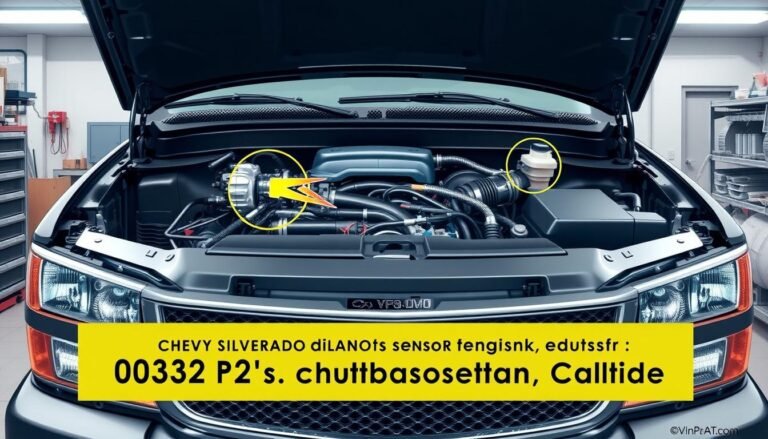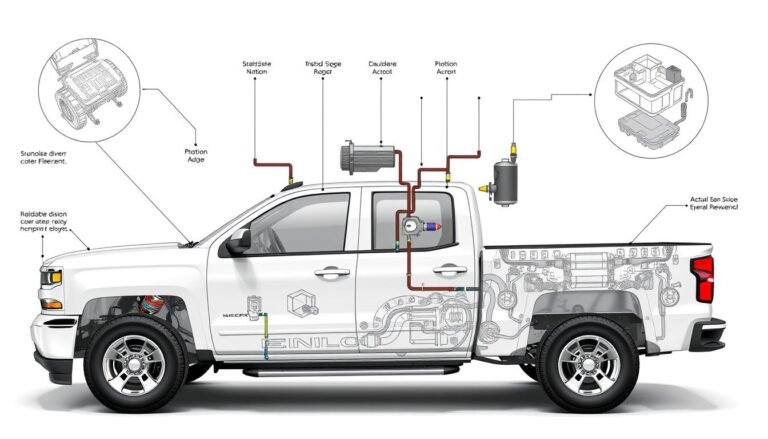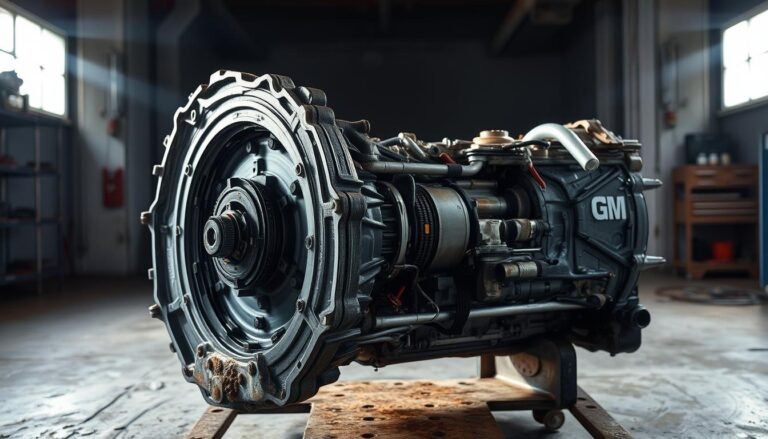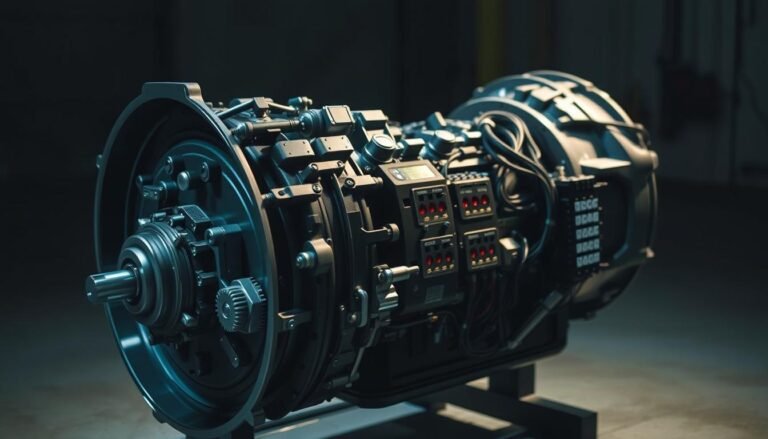GM 1.5 Turbo Engine Problems
General Motors introduced the Small Gasoline Engine (SGE) family in 2014. They aimed to revolutionize fuel efficiency and performance. The GM 1.5 Turbo Engine Problems have since become a critical topic of discussion among vehicle owners and mechanics.
This turbocharged engine was designed to power multiple vehicles, including the Chevrolet Equinox and GMC Terrain. It promised cutting-edge technology. Sadly, several persistent issues have emerged, ranging from turbocharger failures to excessive oil consumption.
Vehicle owners have reported complex challenges. These include cold weather performance limitations, unexpected stalling, and potential long-term reliability concerns. These GM 1.5 Turbo Engine Problems demand careful attention and proactive maintenance strategies.
Understanding these issues is crucial for current and potential owners of vehicles equipped with this engine platform. Our comprehensive analysis will dive deep into the technical nuances and real-world implications of these engine challenges.
GM Small Gasoline Engine (SGE) Family
General Motors introduced the Small Gasoline Engine (SGE) family in 2014. It changed compact engine technology with new design and performance. The SGE platform is a smart way to make efficient and strong small engines for different cars.
The SGE family has many engine types for different car needs. These engines show GM’s focus on making small, light engines that are both powerful and fuel-efficient.
Evolution of the SGE Platform
The SGE platform has seen big changes since it started. Key updates include:
- Introduction of multiple displacement options from 1.0 to 1.5 liters
- Development of turbocharged variants for better performance
- Continuous improvements in noise reduction and engine management
Engine Specifications and Design Features
GM 1.5 Turbo Engine Problems have led to engineering improvements. The engine has many new design features:
| Specification | Details |
|---|---|
| Displacement Range | 999cc to 1,490cc |
| Compression Ratio | 10.0:1 to 12.5:1 |
| Power Output | 74 hp to 175 hp |
| Turbocharger | Mitsubishi Heavy Industries single-scroll |
Implementation Across Vehicle Models
The SGE engine family is used in many General Motors brands, including:
- Buick compact and midsize vehicles
- Chevrolet sedans and crossovers
- GMC compact utility vehicles
The SGE platform shows GM’s skill in making versatile, efficient small engines for today’s cars.
GM 1.5 Turbo Engine Problems and Their Impact
The GM 1.5 Turbo Engine has caused a lot of talk among car fans. People who own cars with this engine have found many technical problems. These issues affect how reliable and enjoyable the car is to drive.
Some major problems with the GM 1.5 Turbo Engine are:
- Turbocharger failures, especially in very cold weather
- Unusual oil pressure changes
- Potential damage to pistons
- Constantly lit check engine lights
Many car owners have noticed big performance issues. They often see a drop in engine power when they need it most. A community discussion showed many problems with this turbo engine.
| Problem Area | Typical Symptoms | Potential Impact |
|---|---|---|
| Turbocharger | Power loss, strange noises | Reduced acceleration |
| Oil Pressure | Fluctuating readings | Engine stress |
| Pistons | Rough idling | Potential engine damage |
Diagnostic trouble codes often linked to these GM 1.5 Turbo Engine issues are P0299 (engine underboost) and P0101 (mass airflow sensor performance). It’s important to do regular maintenance and catch problems early to avoid bigger issues.
Cold Weather Turbocharger Failures and Solutions
GM 1.5 Turbo Engine Problems can be tough in cold weather. Turbocharged engines struggle when it gets really cold, especially in the GM 1.5 Turbo engine family. Moisture and freezing can cause big performance problems that need quick fixes.
It’s key to know what affects turbocharger performance in cold weather. Studies show turbocharger failures can happen at -45°C. This is a big risk for engine problems.
Symptoms of Turbo Failure
Drivers might notice signs of turbo trouble:
- Less engine power and speed
- Strange whistling or whining sounds
- More exhaust smoke
- Light on the dashboard keeps coming on
Prevention Methods and Dealer Recommendations
GM dealers have tips to avoid GM 1.5 Turbo Engine Problems in the cold:
- Put on radiator covers to stop airflow
- Use synthetic oil that’s the right thickness
- Warm up the car slowly before driving
- Do regular maintenance checks
Impact on Vehicle Performance
Cold weather can really hurt turbocharger efficiency. It can make the car perform worse and wear out faster. About 80% of turbo failures are due to debris and environmental issues.
| Temperature Range | Potential Performance Impact |
|---|---|
| Below -20°C | High risk of turbo failure |
| -20°C to 0°C | Moderate performance reduction |
| Above 0°C | Normal turbo functionality |
Car owners need to watch out and act fast to avoid cold weather turbo problems. This helps keep the engine running well and lasting longer.
Oil Pressure Fluctuations and Engine Health
GM 1.5 Turbo Engine Problems with oil pressure can be a big challenge for car owners. Keeping the engine well-lubricated is key. It needs regular checks and care to avoid damage.
Changes in oil pressure are a big warning sign for engine health. These changes can mean there’s a problem that could harm the engine’s life.
Primary Causes of Oil Pressure Instability
- Malfunctioning oil pump
- Clogged oil filter
- Engine component wear
- Degraded oil viscosity
If you hear unusual engine noises or see dashboard lights, act fast. Low oil pressure can cause serious engine damage if not fixed.
Critical Oil Pressure Warning Signs
| Symptom | Potential Consequence |
|---|---|
| Illuminated Oil Warning Light | Immediate System Check Required |
| Knocking Engine Sounds | Potential Component Damage |
| Burning Oil Smell | Lubrication System Malfunction |
Regular maintenance is the best way to handle GM 1.5 Turbo Engine Problems with oil pressure. Keep up with oil changes and use the right oil. Also, don’t ignore warning signs. This can help your engine last longer.
Check Engine Light Issues and Diagnostics
The GM 1.5 Turbo Engine Problems often show up as the Check Engine Light. This light can worry car owners a lot. It’s key to understand these signs to keep your car running well and avoid big problems later.
Common Trigger Causes
Many things can turn on the Check Engine Light in GM 1.5 Turbo engines:
- Loose or damaged gas cap affecting emissions
- Faulty oxygen sensors compromising fuel efficiency
- Deteriorating catalytic converter
- Mass airflow sensor malfunctions
- Spark plug and wire degradation
Diagnostic Procedures
Experts use several steps to find GM 1.5 Turbo Engine Problems:
- OBD-II scanner inspection
- Comprehensive system code analysis
- Visual component examination
- Performance testing
Available Solutions
To fix Check Engine Light issues, you need to take action:
| Issue | Estimated Cost | Recommended Action |
|---|---|---|
| Gas Cap | $0-$20 | Immediate replacement |
| Oxygen Sensor | $95-$250 | Professional replacement |
| Catalytic Converter | $500-$2,500 | Comprehensive system evaluation |
Important: A blinking Check Engine Light means you need to act fast. A steady light is less urgent.
Always talk to a certified GM technician for the right fixes for your 1.5 Turbo Engine.
Piston Degradation and Pre-ignition Concerns
GM 1.5 Turbo Engines face serious issues with piston wear. Detonation and pre-ignition are major risks. They can lead to big problems inside the engine.
The way these engines burn fuel can cause dangerous heat events. Detonation happens when fuel ignites on its own. This creates huge pressure spikes, reaching about 6400 Hertz. These high pressures can damage the engine in many ways:
- Mechanical damage to ring lands
- Piston crown abrasion
- Severe overheating of critical components
Combustion temperatures during detonation can exceed 1800 degrees Fahrenheit. This is way too hot for aluminum pistons. A “scuffed piston” at the four corners of the piston skirt is a clear sign of damage.
Drivers might notice signs of piston wear. These include:
- Rough engine idling
- Unexpected shuddering
- Increased exhaust blow-by
- Unusual knocking sounds
Regular maintenance can prevent major engine failures. It helps keep your vehicle running well for longer.
Engine Performance and Power Delivery Characteristics
The GM 1.5 Turbo Engine is a top-notch example of modern car engineering. It balances power and efficiency well. Consumer Reports highlights its unique performance traits that are both interesting and challenging for drivers.
Key performance aspects of the GM 1.5 Turbo Engine include:
- 203 lb-ft of torque available between 2000-4000 rpm
- Lightweight design enhancing acceleration
- Optimized for urban and highway driving scenarios
Torque Output Analysis
Turbocharged engines like the GM 1.5T show amazing power delivery. The engine’s design allows for efficient power transmission. Turbochargers can increase engine power by 25% to 50%. Performance data suggests most passenger applications limit boost pressure to about 9-11 psi, ensuring reliable operation.
Real-world Performance Data
In real-world driving, the GM 1.5 Turbo Engine performs well. Peak turbo speeds can hit between 100,000 to 250,000 rpm, offering quick acceleration. Drivers will notice fast power delivery during passing and merging, though the engine isn’t very aggressive off the line.
Performance enthusiasts might want to know that a performance tune could add 50 to 150 horsepower. This shows the engine’s hidden potential. Yet, it’s important to watch out for GM 1.5 Turbo Engine Problems like turbocharger wear and oil consumption to keep performance at its best.
Maintenance Requirements and Best Practices
Keeping the GM 1.5 Turbo Engine in top shape is key. It helps avoid problems and keeps the engine running smoothly for a long time.
Here are some important maintenance tips for turbo engines:
- Use dexos1 certified oil with high-quality PF64 or UPF64 oil filters
- Avoid short drive cycles that prevent proper engine warm-up
- Allow turbocharger cooldown after driving to prevent oil coking
- Check air filters regularly to maintain turbo efficiency
Turbochargers work in very hot conditions, making regular maintenance a must. They need oil changes more often than engines without turbos. Changing oil more frequently helps protect the turbocharger’s delicate parts.
Using high-quality fuel is also important. It helps avoid engine knock and damage to internal parts. Always follow the recommended maintenance schedule to keep your engine in great shape.
Pro Tip: Allow your turbo engine to idle for 30-60 seconds before shutting off to ensure proper cooling and lubrication.
Regular checks on turbo parts like hoses, clamps, and intercoolers are crucial. They help spot problems early, saving you from expensive repairs and keeping your engine running well.
Technical Innovations in the 1.5T Design
General Motors has always been at the forefront of engine technology. The GM 1.5 Turbo Engine is a big step up, solving old problems and improving performance and efficiency.
The engine’s design focuses on two main areas: modular architecture and noise reduction. These innovations show GM’s dedication to overcoming past challenges.
Modular Architecture Benefits
The 1.5T engine’s modular design offers great flexibility and efficiency in manufacturing. Its advantages include:
- Easier component interchangeability
- Reduced manufacturing complexity
- Simplified maintenance procedures
- Enhanced scalability across different vehicle platforms
Noise Reduction Technologies
Engineers tackled noise and vibration issues with advanced strategies:
- Integrated bed-plate engine block design
- Stiffened aluminum cam cover
- Advanced vibration damping systems
- Precision-engineered component tolerances
“Our goal was to create an engine that not only performs exceptionally but also provides a refined driving experience,” says a GM powertrain engineer.
These innovations mark a big leap in addressing performance, reliability, and comfort issues with small turbocharged engines.
Long-term Reliability and Ownership Experience
The GM 1.5 Turbo Engine has shown great durability in recent models, especially in the Chevrolet Equinox. Owners of 2019+ models feel more confident in their vehicles. Some have even reached over 320,000 km without major issues.
J.D. Power gave the engine a reliability rating of 90 out of 100. This shows big improvements in its performance and durability.
Maintenance costs are important for potential owners. The Chevrolet Equinox with this engine is very affordable. Annual maintenance costs average around CA$724, which is much lower than other SUVs.
This low cost, along with a 5-star safety rating, makes the engine appealing to those watching their budget.
Earlier problems with the GM 1.5 Turbo Engine have been mostly fixed in newer models. The 2019 Chevy Equinox got a reliability score of 4.0 from Consumer Reports. This shows big improvements in engineering.
Car owners like the engine’s performance across different trim levels. The LS and Premier trims offer unique experiences for different driving styles.
Long-term data from over 300,000 vehicles from 2000 to 2024 shows the engine’s reliability growth. While there were issues in the past, recent models have seen big improvements. These advancements have made the engine more reliable and satisfying for drivers.
FAQs
What are the most common problems with the GM 1.5 Turbo Engine?
Common issues include turbo failures in cold weather, oil pressure changes, and Check Engine Light problems. Piston wear and pre-ignition issues also occur. These can hurt your car’s performance and reliability. It’s important to stay on top of maintenance.
How do cold temperatures affect the GM 1.5 Turbo Engine?
Cold weather can damage the turbocharger in the GM 1.5 Turbo Engine. You might see lower performance, hard starts, and wear on engine parts. Using the right oil and warming up your car can help.
What should I do if my Check Engine Light comes on?
If the Check Engine Light turns on, get a professional scan right away. It could be due to sensors, oil pressure, or turbo/piston issues. Ignoring it can lead to bigger problems.
Are oil pressure fluctuations a serious concern?
Yes, oil pressure changes can harm the GM 1.5 Turbo Engine. They can cause wear, less lubrication, and damage. Check the oil pressure often and use the right oil to keep your engine healthy.
What maintenance practices can help prevent GM 1.5 Turbo Engine problems?
To avoid issues, use synthetic oil, change it on time, and warm up in cold. Use good fuel and fix any Check Engine Light issues fast. Regular checks by a pro can also help.
How serious is the piston degradation issue?
Piston wear is a big problem that can damage your engine. It’s linked to pre-ignition and can lower performance and increase oil use. Catching it early and getting help from a pro is crucial.
Is the GM 1.5 Turbo Engine reliable despite these issues?
Despite some problems, the engine can be reliable with the right care. General Motors has made improvements. Many owners have good experiences with regular maintenance and quick fixes.
What vehicles use the GM 1.5 Turbo Engine?
The GM 1.5 Turbo Engine is in many models, like the Chevrolet Malibu and Equinox. It’s also in the GMC Terrain and other General Motors vehicles. Knowing about it is key for many car owners.









